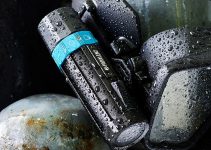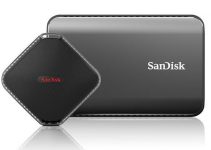Time-lapse videography is a powerful cinematography tool that when used accordingly can do wonders for your production. A common issue that you might stumble upon, though, when shooting time-lapse videos are the annoying flickering artefacts.
Experienced videographers know how to avoid this troublesome issue, but even when you are following strictly all the rules you still might end up with varying exposure values, creating a less than enjoyable viewing experience.
To resolve the problem, Rob Nelson from Rob & Jonas’ Filmmaking Tips brings an in-depth troubleshooting guide on de-flickering by covering the process from beginning to end. So if you want to know how you can fix a flickering time-lapse video with a few tools, Rob will walk you through the process using LRTimelapse 4, Lightroom and FCPX.
You’ve probably heard the following tips numerous times, but when you are in the field and tend to shoot a time-lapse video make sure you always use the manual settings to adjust the white balance, focus, aperture, shutter speed and ISO of your DSLR or mirrorless camera. Further, try to keep your tripod stable, in case you are using one. If possible, always shoot in Raw. Make certain that each take of your time-lapse is at least 10 seconds long. In other words, you will need 240 frames for a 10-second clip running at 24fps. By following this simple rules, you will avoid further complications and a lot of headaches in post.
As Rob points out, if you already have shot your still images as JPEGs you can still apply the following technique to reduce flickering. However, you need to convert all of the captured files in a Raw format such as DNG to be able to process the data when round-tripping between Lightroom and LRTimelapse to complete the de-flickering post-processing.
The first step of the workflow Rob suggests is importing the JPEG files in Lightroom and export those as DNGs. If you already have shot your still images as Raw files, you can skip this step. Then you need to import your sequence in LRTimelapse. The software uses keyframes and average light readings to create consistent exposures across your set of images. When the application loads, choose your folder of time-lapse stills from the list of available folders in the left-hand column.
Head over to Visual Workflow tab and tweak the images accordingly by utilizing the available image processing controls. Overall, LRTimelapse provides various powerful features that let users edit keyframes, create an auto-transition between those, choose reference area of the image and finally de-flicker the time-lapse itself.
The best part is that you can export meta-data from LRTimelapse that you can later open in Lightroom (and vice verse) to tweak the images further. Once you’re satisfied with the results, you can export your image sequence from Lightroom that then can be imported in your NLE of choice.
Finally, render the image sequence as a single video file according to the specifications of your project. Keep in mind, though, that the time required to complete the process may vary significantly depending on the number of still images you need to deal with as well as the computing power and overall capabilities of your workstation.
[via Rob & Jonas’ Filmmaking Tips]
Disclaimer: As an Amazon Associate partner and participant in B&H and Adorama Affiliate programmes, we earn a small comission from each purchase made through the affiliate links listed above at no additional cost to you.



